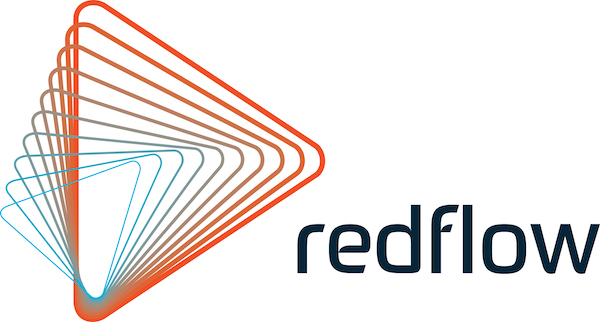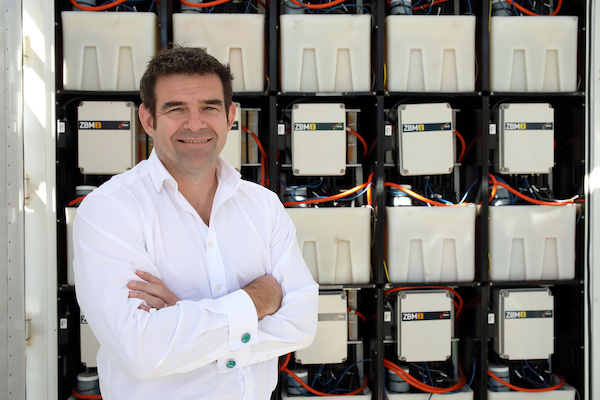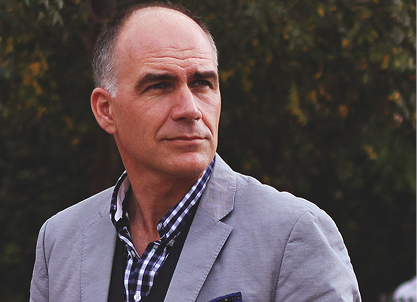Redflow

About Redflow
Redflow Limited, a publicly-listed Australian company (ASX: RFX), produces small 10kWh zinc-bromine flow batteries that tolerate daily hard work in harsh conditions. Redflow batteries are designed for high cycle-rate, long time-base stationary energy storage applications in the telecommunications, commercial & industrial and high-end residential sectors, and are scalable from a single battery installation through to grid-scale deployments. Redflow batteries are sold, installed and maintained by an international network of energy system integrators. Redflow’s smart, self-protecting batteries offer unique advantages including secure remote management, 100 per cent daily depth of discharge, tolerance of high ambient temperatures, a simple recycling path, no propensity for thermal runaway and sustained energy delivery throughout their operating life.
- Details
- In Redflow
- /

In a letter to shareholders accompanying the company’s 2017-18 results, Redflow reports that the past year had seen the company successfully set up its wholly owned factory in Thailand, where it now produces its unique zinc-bromine flow batteries.
Chairman Brett Johnson said Redflow’s primary focus was on producing high-quality batteries to meet the commercial and technical requirements of its customers. “Redflow's priority is to maintain an efficient, high-quality manufacturing facility that, with increasing sales revenue, will progressively improve our gross profit margin,” he said.
- Details
- In Redflow
- /
 Williams Burton Leopardi director David BurtonRedflow’s ZBM2 zinc-bromine flow batteries have solved the problem of insufficient energy supply that was holding back a $4 million renovation of a heritage-listed building in central Adelaide.
Williams Burton Leopardi director David BurtonRedflow’s ZBM2 zinc-bromine flow batteries have solved the problem of insufficient energy supply that was holding back a $4 million renovation of a heritage-listed building in central Adelaide.
After architectural firm Williams Burton Leopardi bought the derelict 1916 Darling Building, largely neglected since the 1960s, they learned that the planned peak energy demand for the renovated building would require more electricity than the local power grid could supply. The peak power draw during summer was calculated at 290 amps - whereas SA Power Networks could initially supply only 150 amps, although this was later revised upwards to 200 amps.
Williams Burton Leopardi director David Burton said many solutions were so expensive they would have made the renovated building commercially unviable. “We didn’t have the space in the building for a transformer; gas would cost us hundreds of thousands of dollars and ‘winging it’ was not an option,” he said.
- Details
- In Redflow
- /

New Zealand-based telecommunications infrastructure specialist Hitech Solutions last year chose Redflow’s ZBM2 batteries to provide energy storage for Fiji’s new digital television network which it is deploying for the Fiji Government throughout the Pacific nation, including remote islands.
Hitech Solutions ordered US$1.2 million worth of Redflow ZBM2 batteries to store and supply renewable energy to power the Fijian digital TV network. The company, which has operated a five-battery trial site in Fiji during the past year, intends to scale up its deployment of solar panels and Redflow batteries during the next six months. Hitech will install from five to 60 ZBM2 batteries at more than 10 sites in Fiji, many of which are on hills with no access to the country’s electricity grid.
Unveiled in December last year, the digital TV network will provide Fijians, even in the most remote parts of the country, with access to eight free-to-air television channels through a set top box, plus an option for catch-up TV. Digital television will also provide a platform to telecast important messages to people in maritime zones and rural areas in times of disaster, such as cyclones.
Hitech Solutions selected Redflow’s zinc-bromine flow batteries for the challenging project because of their robustness, long life, safety, temperature tolerance and straightforward recycling process. Hitech saved 40 tonnes of battery weight by choosing Redflow batteries over lead-acid batteries - the typical choice for telecommunication network energy storage.
Hitech Solutions Chief Technology Officer Derek Gaeth said Redflow batteries offered many benefits for the Fijian deployment. “The primary need was for a robust design with a long service life,” he said.
More News...
- Redflow manufactures complete batteries in Thailand (06 July 2018)
- Redflow cuts $1700 in power costs at holiday house (11 May 2018)
- Redflow raises A$18.1M to grow battery sales (26 April 2018)
- Redflow board pleased by Thai factory progress (29 March 2018)
- Redflow recruits new skills for next phase of growth (27 March 2018)
- First Redflow Thai-stack batteries ready for customers (13 March 2018)
- Redflow simplifies Large Scale Battery design (20 February 2018)
- Redflow’s first Thai battery stacks arrive in Brisbane (07 February 2018)
- Mossel Bay goes carbon neutral with Redflow (31 January 2018)
- Redflow produces first battery stacks in Thailand (23 January 2018)
- Redflow continues board renewal (22 December 2017)
- Redflow makes first battery components in Thailand (19 December 2017)
- Redflow reveals Thai battery production timeline (24 November 2017)
- Redflow aims for 250 batteries/month from Thailand (06 November 2017)
- QLD home sets Redflow residential record (30 October 2017)
- Redflow starts installing battery line in Thai factory (26 October 2017)
- Victorian couple live off-grid dream with ZCell (12 October 2017)
- Redflow restructures leadership for growth (27 September 2017)
- South African factory beats power cuts with Redflow batteries (25 September 2017)
- Hi-Tech places second US$600,000 order for Redflow batteries (18 September 2017)
Off the Cuff

Simon Hackett speaks about Formula E racing on ABC Radio Adelaide
Australian renewable energy investor Simon Hackett last week spoke to Radio ABC Adelaide's Afternoons host Sonya Feldhoff about the benefits for replacing the cancelled Adelaide 500 motor race with a...
Read more
Seven simple steps for mental health in time of coronavirus
After the summer bushfires, the coronavirus pandemic and associated economic shutdown, “unprecedented” must be a standout favourite for Macquarie Dictionary’s Word of the Year for 2020. For the first time...
Read more
John Harris talks (a bit) about International Albinism Awareness Day on ABC Radio
John Harris, who has the honorary role of PR guy for the Albinism Fellowship of Australia, was interviewed by Peter Goers on the Evenings show of ABC Radio Adelaide on...
Read more
Start-ups are key to the future of everything
Nigel Lake, Executive Chair of global business advisory firm Pottinger, will tell this week's Myriad start-ups festival in Brisbane, running May 16-19, that Australia needs start-ups to protect its prosperity. Pottinger...
Read moreContact
Impress Media Australia
P: +61 8 8431 4000
E: john@impress.com.au
W: www.impress.com.au
Street:
Impress Media Australia
313 Portrush Road,
Norwood SA 5067
Click here for our location
Postal:
Impress Media Australia
Box 95, Kensington Park
South Australia 5068
